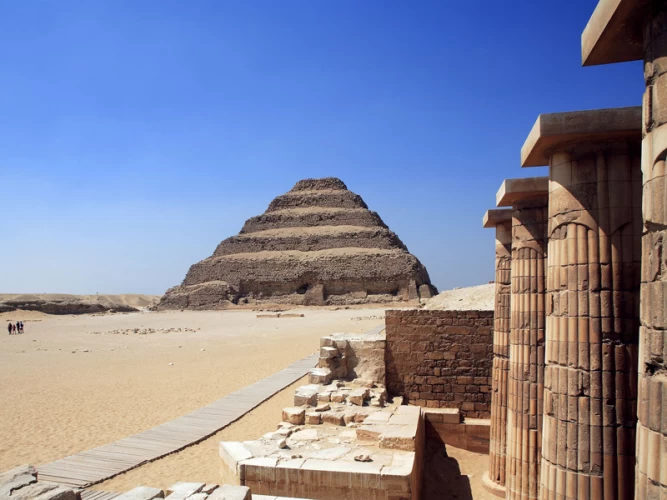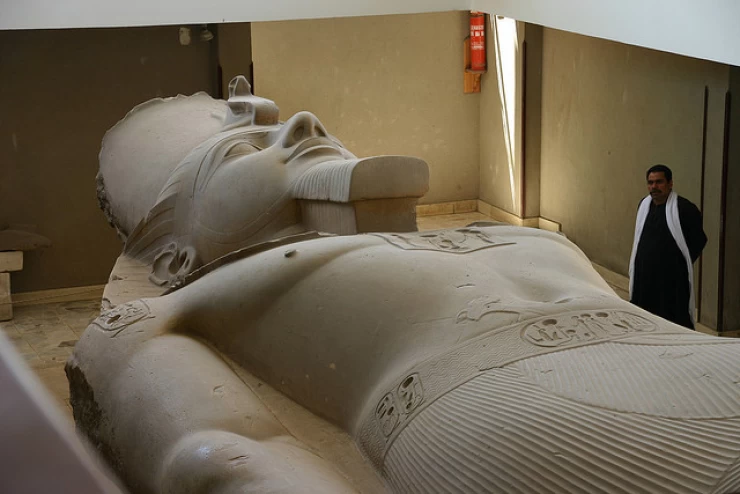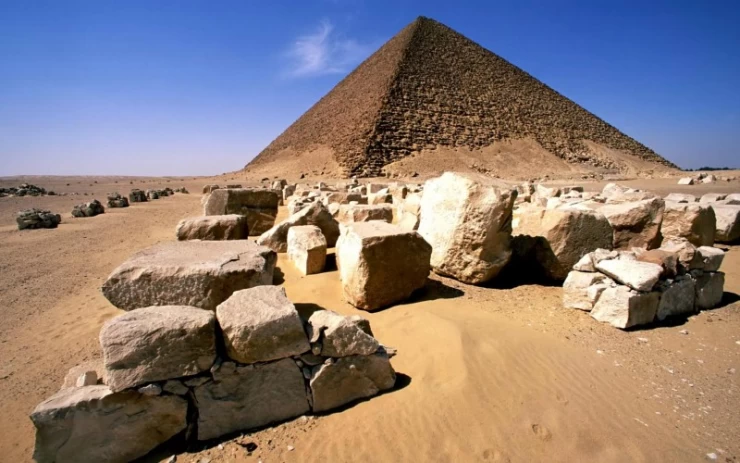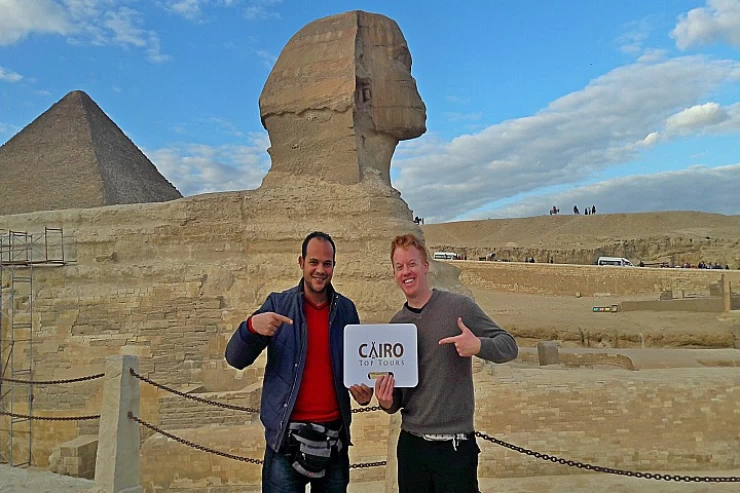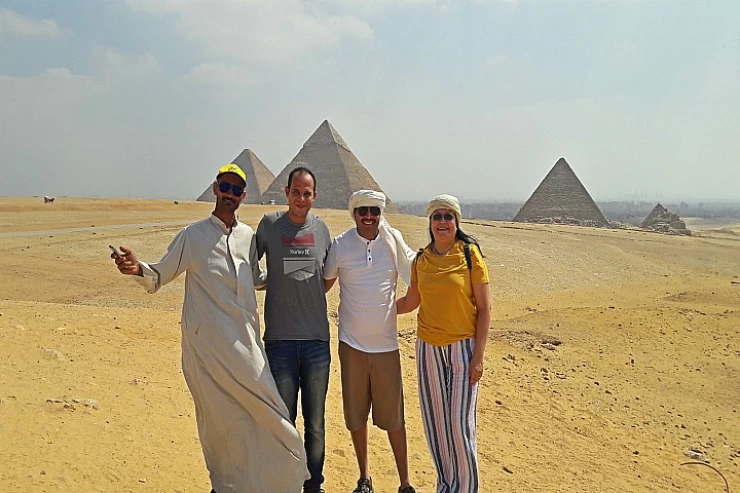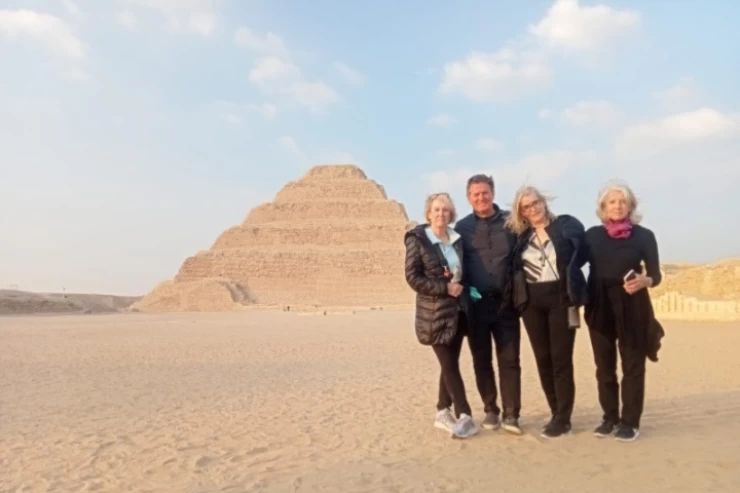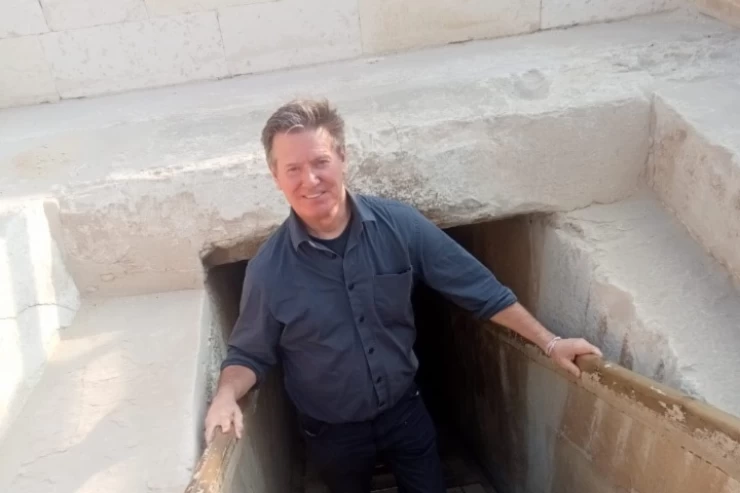Our tour begins at 9:00 AM with your knowledgeable, licensed guide to educate you on the history of this period. The Step Pyramid, which you will see, was constructed in phases. A mastaba was built with a height of about 8.5 meters, then 9 meters on the eastern side, thus adding 11 wells belonging to the Djoser family to the body of the building. The building's height was then increased by 60 meters by adding four mastabas, one over the other, giving it a pyramidal form.
The Saqqara area is full of other areas and monuments such as the Kagemni Tomb, the Imhotep Museum and many others. Enjoy all of this and more with us. Then we move to another area which is evidence of the development of the form of construction of the tombs of their dead.
King Sneferu's first pyramid was nearly destroyed and never finished. However, he did build a complete pyramid about a kilometer north of the first pyramid, called the Red Pyramid. Because of the reddish color of its stones, which come from nearby quarries, it is known as "the Red" and is the highest of the Dahshur pyramids. It was coated in a layer of white limestone that had been taken out of the Tura quarries, which are located south of present-day Cairo, and used again for building throughout the Middle Ages. The pyramid of King Senusret III is also there, encircled by the princesses Set-Hathor-Mont's graves. Learn more with our guide.
When mentioning the capitals of ancient Egypt throughout ancient Egyptian history, in the north, center, and south of the country, the capital of capitals, Memphis, comes to the forefront, crowning all the capitals. The city of cities witnessed the unification of the two regions of Egypt at the hands of its strong men from Upper Egypt, led by Scorpion II (one of the kings of the Zero Dynasty) and King Narmer (head of the First Dynasty). The location of this capital (circa 3200 BC) was chosen with great care to play a role in the story.
At the end, your guide will leave you, and your driver will take you to your desired destination.



